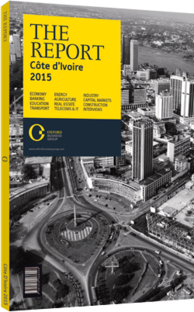Dominique Lafont, CEO, Bolloré Africa Logistics: Interview

Interview: Dominique Lafont
How can south-south trade benefit from transport infrastructure development?
DOMINIQUE LAFONT: The African continent has achieved an average growth rate of 5% for nearly a decade, while emerging countries such as China and India have intensified their investment in sub-Saharan Africa. However, while France has lost ground in terms of its relative share, it still remains the biggest foreign direct investor.
Better transport infrastructure would help boost productive investment in sectors like agro-industry, ICT and manufacturing. Côte d'Ivoire is well positioned to accommodate agro-industrial clusters for commodities such as cocoa, cashew, coffee and cotton. According to demographic trends, the continent’s population is expected to reach 2bn by 2050. To meet the needs of this population, Africa needs to further diversify its trade partners as well as nourish intra-African trade.
How efficient is intermodal transportation?
LAFONT: Côte d'Ivoire’s strategically important location can serve as a gateway for its landlocked neighbours. On the maritime side, Abidjan Terminal has invested massively – CFA80bn (€1.22bn) – to ensure that the port’s terminal remains competitive and attractive. Currently, the container terminal has six Panamax gantry cranes, 16 gantry parks and two mobile cranes.
The country can also rely on its rail infrastructure, a unique link in West Africa, which stretches for 1155 km between Abidjan and Ouagadougou. Coupled with strong security measures and low greenhouse gas emissions, this railway is a real advantage for multimodal transportation purposes. In a joint effort, Côte d'Ivoire and Burkina Faso have also called for the rehabilitation of the line between Abidjan and Kaya.
In what ways will the second container terminal ensure a competitive pricing structure?
LAFONT: The concession of the second container terminal was granted on four criteria, among which was port tariff. As part of the call for tender, Côte d'Ivoire set a maximum tariff, and our proposal included the lowest offer – 25% lower than the cap. Additionally, the opening of new shipping lines with Asia should also help to lower freight rates. The construction of the 18-metre-deep second container terminal will allow the Port of Abidjan to have an efficient trans-shipment platform. By 2017, vessels with a capacity of up to 8500 containers will be able to dock at the port. Overall terminal productivity will increase with higher technical standards, a 1.1-km dock, an embankment spanning a 37.5-ha area, storage capacity for 2m containers, and the deepening of the channel. Over €400m will be invested in handling equipment, including six gantry cranes, 15 gantry parks and information systems.
To what extent can public-private partnerships (PPPs) be beneficial in boosting economic growth?
LAFONT: A number of West and Central African States have granted concessions in sectors like water, electricity and transport infrastructure. Côte d'Ivoire was a pioneer when it chose to create a PPP with its Burkinabé counterparts to establish a transnational railway.
More recently, Ivorian authorities strengthened regulations for PPPs by establishing several institutions to supervise those concessions. To some extent, PPPs weigh in the balance of economic success and contribute to Côte d’Ivoire’s attractiveness to investors.
What are the challenges when it comes to soft infrastructure improvements?
LAFONT: The role of Customs in control procedures and clearance makes it important for streamlining port and logistics activities. However, if procedures are not respected or do not match global market trends, Customs can also hinder the growth of trade by becoming a disincentive to increased imports and exports. Côte d’Ivoire has begun to ease procedures, notably with the dematerialisation of documents. This should help secure the government’s revenues and send a strong signal of confidence to international and local private investors.
You have reached the limit of premium articles you can view for free.
Choose from the options below to purchase print or digital editions of our Reports. You can also purchase a website subscription giving you unlimited access to all of our Reports online for 12 months.
If you have already purchased this Report or have a website subscription, please login to continue.

